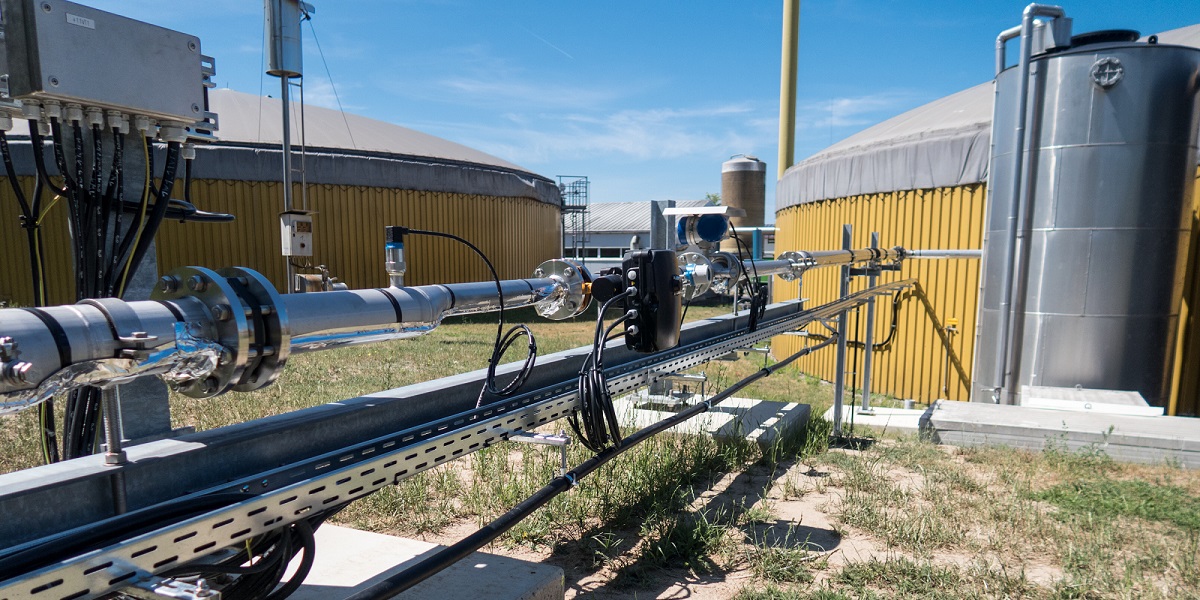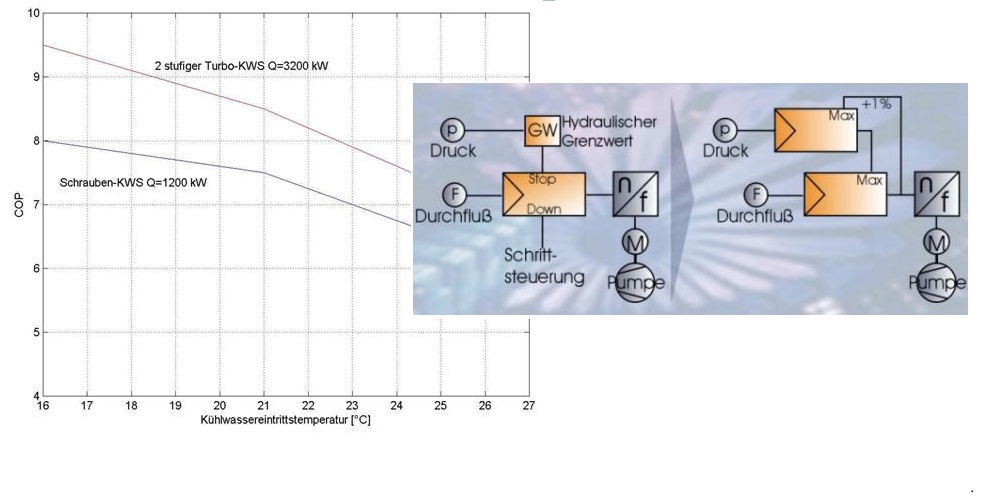Pump Regulation in a Coupling Station
A coupling station connects two warm water grids directly (without heat exchanger) and pumps large amounts of energy in the form of warm water from one grid to the other. A coupling station can also be envisioned as a huge pump station. The coupling of two grids leads to enormous demands on the regulator, since it can lead to critical hydraulic situations.
The goal of this process is to move as much water as possible. The pump used for this purpose is controlled by a flow regulator. The hydraulic threshold is installed on the regulator as the preset stop signal. If this threshold is exceeded the flow amount will be reduced through paced controls. Once the stop signal disappears the regulator is reactivated, leading to a vacillation around the hydraulic threshold of the control loop.
We have suggested replacing the hydraulic threshold with a limit regulator (override regulator). The existing flow regulator was assigned a dynamic threshold, the preset value of the limit regulator. The existing hydraulic value (pressure) and a preset nominal value (slightly below the hydraulic threshold) have been pre-installed on the limit regulator. This vacillation-free regulator structure prevents the violation of hydraulic limits while leading to a maximized flow at the same time.



